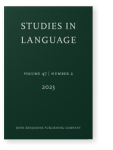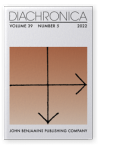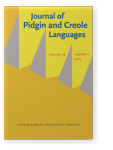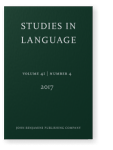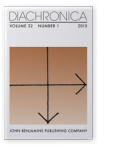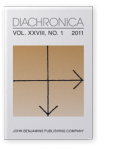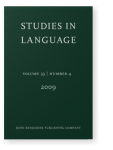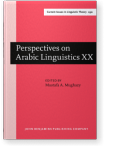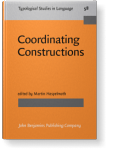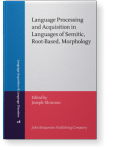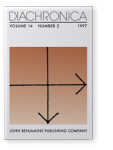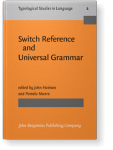Jeffrey Heath
List of John Benjamins publications for which Jeffrey Heath plays a role.
2023 Dogon pseudo-subjects with or without true subjects Studies in Language 47:2, pp. 392–421 | Article
Dogon pseudo-subjects are bare meteorological, temporal-environmental, and partonymic nouns of low referentiality/specificity that occur in fixed noun-verb collocations. The pseudo-subject controls the choice of verb in all cases, but it fails to behave like a true subject in linear position, in… read more
2022 Origins of Dogon NP tonosyntax Diachronica 39:5, pp. 707–741 | Article
Like other complex morphosyntactic and morphophonological structures that are endemic to single language families, Dogon NP tonosyntax is the result of the fortuitous interlocking of diachronically unrelated processes and constructions. It arose due to the following combination: (a) right-headed… read more
2019 Caught in the middle: Songhay bidirectional case-marker *nà and its likely Mande origin Journal of Pidgin and Creole Languages 34:1, pp. 126–146 | Article
The relationship between the Songhay and Mande language families has fascinated West Africanists. The typological similarities run deep, but the respective lexicons are noncognate. I focus here on a typological rarity, a bidirectional case marker (BCM), namely Proto-Songhay *nà and its… read more
2017 Cyclical ups and downs: A review article Studies in Language 41:4, pp. 1007–1025 | Review article
2015 D-possessives and the origins of Moroccan Arabic Diachronica 32:1, pp. 1–33 | Article
Despite the general view that Berber was the only important substratum for Maghrebi Arabic, Moroccan Arabic (MA) took shape in the 7th–8th centuries AD in Roman cities in which Late Latin (LL) was spoken. The occupation of Morocco was far more tenuous than in other areas conquered during the Arab… read more
2015 Subject versus addressee in Dogon imperatives and hortatives Studies in Language 39:3, pp. 555–593 | Article
Indicative sentences in Dogon have a subject of S/A type identifiable by convergent criteria. However, Dogon imperatives diverge from English in lacking full-fledged referential subjects. Specifically, covert imperative actors (“subjects”) cannot bind transpersonal reflexive pronominals the way… read more
2011 Innovation of head-marking in Humburi Senni (Songhay, Mali) Diachronica 28:1, pp. 1–24 | Article
Humburi Senni (HS), the Songhay language spoken in the town of Hombori in Mali, has innovated not one but two suffixal pronominal-possessor paradigms for nouns (inalienable vs. alienable), a suffixal pronominal-complement paradigm for (original) postpositions, and a suffixal Imperative Singular for… read more
2007 Stretching ablaut: Morphological adaptation of new *CCu and *CCi stems in Moroccan Arabic Perspectives on Arabic Linguistics: Papers from the annual symposium on Arabic linguistics, Mughazy, Mustafa A. (ed.), pp. 3–24 | Article
2004 3. Coordination: An adaptationist view Coordinating Constructions, Haspelmath, Martin (ed.), pp. 67–88 | Chapter
1.Introduction
2. Languages
3. Scope delimitation: English and Koyraboro Senni
4. “Coordinating” particles and “scope” delimitation in Nunggubuyu
5. Lexical alternatives to NP coordination: associative plurals
6. Lexical alternatives to NP coordination: kinship collectives and dyadics
7.… read more
2003 6. Arabic derivational ablaut, processing strategies, and consonantal “roots” Language Processing and Acquisition in Languages of Semitic, Root-Based, Morphology, Shimron, Joseph (ed.), pp. 115–129 | Chapter
1997 Lost Wax: Abrupt Replacement of Key Morphemes in Australian Agreement Complexes Diachronica 14:2, pp. 197–232 | Article
SUMMARY Richly inflected languages often have morphologies in which one or two key relational morphemes serve as the glue which binds other, more substantive morphemes together. When an important relational morpheme suffers phonetic erosion, it may be replaced rather abruptly by a successor… read more
1983 Referential tracking in Nunggubuyu Switch Reference and Universal Grammar: Proceedings of a symposium on switch reference and universal grammar, Winnipeg, May 1981, Haiman, John and Pamela Munro (eds.), pp. 129–150 | Article
